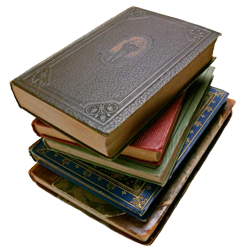
Joodse traditie als permanent leren
Joodse traditie als permanent leren
1986
1986
1ed 1986
347
17
op deze vraag vormen een apart literair-wetenschappelijk genre. Plaatsen we enige passages uit het genoemde artikel onder elkaar, dan vinden we een zee van problemen:
'The fundamental question is whether the Jews from Abraham to the present constitute an entity capable of presenting a single, unitary history. By the criteria to be adduced from the data conceived to form a normal historical unit, they do not. For that long period of time, the Jews have not occupied a single geographical area, have not spoken a single language, have not formed a single society, have not produced a single harmonious culture (p. 213). (...) what made a person or a group 'Jewish' in medieval Christendom, for example, bears virtually nothing in common with what made a person or group 'Jewish' in Nazi Germany (p. 214). From the Babylonian exile in 586 B.C. onward, the Jews have never used a single language in common. Judeo -German (Yiddish), Judeo-Aramic, Judeo-Arabic, Judeo-Persian, Ladino - these undeniably Jewish languages admirably illustrate the ambiguity of the notion of 'Jewish history'. Each is Jewish in the context of the discrete language-system in which it was formed. But only traits common to all of them will serve to tell us what is quintessentially, distinctively, and ubiquitously 'Jewish'. Those uniform traits add up to resort to some Hebrew words and the use of the Hebrew alphabet (p. 215). An observer, lacking prior religious or ethnic commitment - for instance the conviction that the Jews are indeed one people - can therefore hardly be asked to take for granted, without analysis of a searching sort, elements of a common history among discrete and disparate groups, all of them called, each for reasons
largely though not wholly endemic to its context, Jews (p. 216). No 'history
33
of the Jewish people' begins at Sinai - if not when Abraham left Chaldea
(as if that were an historical event! ) (...). Less than three decades ago, all
Jews, wherever they lived, were thrown into a single, disastrous category:
the doomed. And one third of them indeed were killed for sharing what for
many was not a very important trait: a single Jewish grandparent (p. 217).
To put it (. . . ) simply, while there is no single, unitary 'Jewish History',
34
there is a single (but hardly unitary) history of Judaism (p. 2 18)' Wat zien we als we deze opsomming bekijken. Neusner begint met geschiedenis en belandt via taal bij godsdienst. Nog meer wetenschapsgebieden worden in het verloop van het artikel door Neusner aangeroerd, als hij Meyer als volgt citeert:
'For modern Jews a conception of their past is no mere academic matter. It is vital to their self-definition. Contemporary forms of Jewish identity are
Deze techniek levert geen 100% correct resultaat op. Dat betekent dat er onjuiste tekens in de tekst kunnen voorkomen.
Weergave
Afbeelding / Tekst (OCR)



